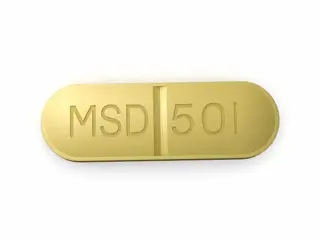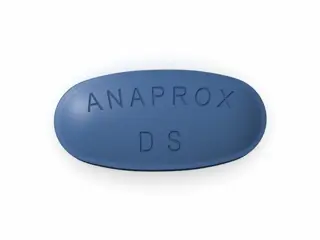Pain Relief
Discover effective pain relief solutions designed to reduce discomfort and improve your daily well-being. Shop trusted medications and remedies for headaches, muscle aches, joint pain, and more, all available for fast and convenient purchase. Experience fast-acting formulas to help you stay active and comfortable.
Pain Relief is a key category in managing discomfort caused by various conditions. The medications offered here range from over-the-counter options to prescription drugs. They target different types of pain including inflammation, muscle spasms, migraines, and nerve pain.
Ibuprofen and Motrin are well-known nonsteroidal anti-inflammatory drugs (NSAIDs). They help reduce pain, fever, and inflammation. These medications are widely used for headaches, menstrual cramps, arthritis, and muscle pain. They work by blocking prostaglandin production, which causes pain and swelling. Users often report effective pain relief but must be cautious with long-term use due to risks of stomach upset and kidney issues.
Celebrex is a selective COX-2 inhibitor. It offers pain relief with a potentially lower risk of stomach irritation compared to traditional NSAIDs. It is commonly prescribed for osteoarthritis, rheumatoid arthritis, and acute pain. Celebrex is praised for its strong anti-inflammatory action and better gastrointestinal tolerance. However, it may increase cardiovascular risk in some patients, so monitoring is essential.
Voltaren and its sustained-release versions, Voltaren SR and Voltarol, are topical and oral NSAIDs. They are effective for joint pain and soft tissue injuries. The topical form is popular for localized relief without many systemic side effects. Oral versions provide longer-lasting effects but should be used with caution in those with stomach or heart conditions.
Anaprox (naproxen) and Naprosyn are also effective NSAIDs frequently used for pain related to arthritis and menstrual cramps. Naprosyn is particularly noted for its long duration of action, making it suitable for chronic pain management. Some users experience mild gastrointestinal discomfort, but it remains a reliable option for many.
Panadol contains paracetamol (acetaminophen). It is a gentle pain reliever and fever reducer. Panadol is not classified as an NSAID, so it does not reduce inflammation. It is safe for most people and preferred when NSAIDs are contraindicated. It is useful for mild to moderate pain such as headaches, toothaches, and muscle aches. Overdose can be dangerous for the liver, so dosing guidelines must be followed carefully.
Mobic (meloxicam) is another NSAID with a focus on treating arthritis-related pain. It tends to have fewer gastrointestinal side effects than older NSAIDs. Mobic offers once-daily dosing, which improves compliance. Its anti-inflammatory and analgesic properties make it a popular choice among patients with chronic joint pain.
Neurontin (gabapentin) is unique in this list. It is primarily used to treat nerve pain rather than inflammatory or musculoskeletal pain. Conditions like diabetic neuropathy and postherpetic neuralgia respond well to Neurontin. It works by calming nerve activity. Some patients experience side effects such as dizziness and fatigue, but it remains effective for nerve-related pain relief.
Imdur (isosorbide mononitrate) is mainly a heart medication but is sometimes mentioned in pain management related to angina. It helps by dilating blood vessels, improving blood flow, and reducing chest pain. Its role in general pain relief is limited compared to other drugs in this category.
Decadron (dexamethasone) is a corticosteroid. It provides powerful anti-inflammatory and immunosuppressive effects. It is used in severe pain caused by inflammation or autoimmune conditions. Due to its strength, Decadron is typically prescribed for short-term use to avoid side effects like weight gain, osteoporosis, and high blood sugar.
Imuran (azathioprine) is an immunosuppressive drug. It is used in autoimmune diseases that cause painful inflammation. Imuran helps reduce the underlying immune response, but pain relief is indirect. It requires close medical supervision due to potential toxic effects.
Zanaflex (tizanidine) and Lioresal (baclofen) are muscle relaxants. They relieve muscle spasms that cause pain, especially in conditions like multiple sclerosis, spinal cord injuries, or back pain. Side effects include drowsiness and weakness, but these drugs often enable better mobility and reduce discomfort.
Iritriptyline and Imitrex are triptans such as Imitrex and Zomig. These are targeted medications for migraine relief. They treat headaches by constricting blood vessels and blocking pain pathways in the brain. Users often find rapid relief from migraine symptoms. However, triptans are not suitable for people with certain cardiovascular problems.
Benemid (probenecid) helps manage pain tied to gout by lowering uric acid levels. It is not a direct pain reliever but prevents painful gout attacks. Patients using Benemid are advised about maintaining hydration and following dietary restrictions.
Pyridium (phenazopyridine) is a urinary analgesic. It does not treat the cause of urinary pain but relieves discomfort from urinary tract infections or procedures. It is usually used for short durations due to its symptomatic nature.
Drugs like Naprelan provide extended-release pain relief with naproxen. This helps maintain consistent blood levels and control chronic pain with fewer doses.
Many NSAIDs in this category, such as Indocin (indomethacin), are potent against inflammation and pain but can cause gastrointestinal and cardiovascular side effects. Indocin is often reserved for more severe inflammatory conditions due to these risks.
In conclusion, the pain relief category offers a wide range of medications. They differ in mechanisms, duration, and specific uses. Choosing the right one depends on the type of pain, patient health profile, and possible side effects. Always consulting a healthcare professional before use is essential for safe and effective pain management.
























